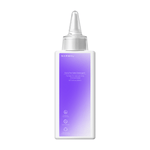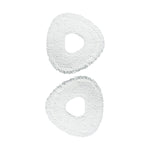Robot vacuums for allergies and dust mites offer an effective, low-maintenance way to reduce indoor allergens and improve air quality. But how exactly do they help? This article explains the key benefits of using a robot vacuum for allergy and dust mite control, especially in Australian homes where pollen, pet hair, and humidity can trigger symptoms.
We explore the essential features that make these vacuums effective—like HEPA filtration, strong suction, and smart navigation—and show you what to look for when choosing a model. You’ll also find our top product recommendation for 2025, the Narwal Freo Z Ultra, and how it compares with other options.
To better understand how robot vacuums remove dust mites and their allergens, we break down the science behind their cleaning systems, including mopping and automated scheduling. Whether you live with asthma, hay fever, or simply want a cleaner home, this guide helps you choose the right vacuum and use it more effectively.
Key Benefits of Robot Vacuums for Allergy and Dust Mite Control
Robot vacuums help reduce allergies and dust mites by improving air quality, removing allergens, and providing consistent cleaning. In this section, we explain how features like HEPA filtration, strong suction, programmable schedules, and quiet operation can make a real difference for allergy relief in Australian homes.
Improve Indoor Air Quality
A clean floor equals cleaner air. Robot vacuums equipped with advanced HEPA filtration systems can trap particles as small as 0.3 microns, including dust mites, pollen, and pet dander. This prevents these allergens from being recirculated into the air during vacuuming. Over time, maintaining cleaner air can significantly ease allergy symptoms, particularly during Australia's high pollen seasons.
Reduce Dust Mites, Pet Hair, and Pollen
Dust mites thrive in carpets, bedding, and soft furnishings. Robot vacuums with strong suction power penetrate deep into floor fibers to extract fine debris that traditional vacuums often miss. For pet owners, this also means better control of loose fur and dander. Daily or frequent cleaning with a robot vacuum disrupts dust mite habitats and keeps allergen levels consistently lower across your living spaces.
Maintain Consistent Cleaning Without Lifting a Finger
Consistency is key when managing allergies. With programmable schedules, robot vacuums can clean your home daily or multiple times per week without you having to remember or intervene. This is especially helpful for busy households or people who struggle with asthma or physical limitations. Automated, hands-free cleaning ensures allergens don’t get a chance to build up.
Quiet Operation for Everyday Use
Unlike bulky upright vacuums that can be loud and disruptive, many modern robot vacuums—including models from Narwal—operate at quiet noise levels (often under 50 dB). This allows them to clean during the night or while you work from home without causing a disturbance. Quiet performance is particularly appreciated in households with pets, children, or people sensitive to noise.
Must-Have Robot Vacuum Features for Allergies and Dust Mites

Robot vacuums for allergies and dust mites work best when equipped with specific features like HEPA filters, strong suction, smart mapping, and large dustbins. In this section, we outline the essential features that help reduce allergens and improve cleaning performance in Australian homes.
HEPA Filters
High-Efficiency Particulate Air (HEPA) filters are crucial for capturing fine particles like pollen, pet dander, and dust mites—all common triggers in Australian households. These filters can trap particles as small as 0.3 microns, preventing allergens from being released back into the air while vacuuming. For those with asthma or severe allergies, a robot vacuum with a genuine HEPA filter can make a noticeable difference in air quality and symptom relief.
Strong Suction Power
Suction strength directly impacts how well a robot vacuum can pull allergens from carpet fibers, upholstery, and hard floors. This is especially important for homes with pets that shed fur or bring in outdoor allergens. A robot vacuum with strong suction—such as models offering over 8,000Pa or 10,000Pa—can pick up dust mites and their droppings, pet hair, and fine debris in a single pass, leaving fewer particles behind.
Smart Navigation and Mapping
Effective allergy control requires full coverage—not just random cleaning. Robot vacuums with smart navigation use technologies like LiDAR, infrared sensors, or AI-powered object recognition to systematically map and clean every room. This ensures no dusty corners or under-bed areas are missed. In allergy-prone homes, especially those with open layouts or layered flooring, intelligent navigation helps maintain consistent cleanliness throughout.
Large Dustbins and Auto-Empty Features
A large dustbin reduces the need for frequent emptying, which also lowers your exposure to allergens during disposal. For users with dust sensitivity, robot vacuums that include a self-emptying base station are especially useful. These systems seal dust inside disposable bags and automatically transfer debris after each clean. In high-allergen environments—such as homes with pets, carpeting, or frequent outdoor airflow—auto-emptying helps maintain a healthier indoor space with less manual effort.
Best Narwal Robot Vacuum for Allergy and Dust Mite Removal
Narwal Freo Z Ultra is the best robot vacuum for allergies and dust mites in Australia. It combines 12,000Pa suction, HEPA-grade filtration, and AI-powered cleaning to remove allergens like pollen, pet dander, and dust mite residue from floors and air. With advanced navigation and automatic mop cleaning, it's ideal for homes that need consistent, hands-free allergy control.
[cta:narwal-freo-z-ultra-robotic-vacuum-and-mop-cleaner-clean-before-you-even-notice]
Narwal Freo Z Ultra – Robot Vacuum & Mop
The Narwal Freo Z Ultra is a top-tier solution designed to tackle allergens, dust mites, and daily dirt with exceptional precision. Equipped with a 12,000Pa suction motor, this vacuum digs deep into carpets and hard floors to remove microscopic debris. Its built-in HEPA dust bag captures particles as small as 0.3 microns, reducing allergens like pollen, pet dander, and mite residue.
The Freo Z Ultra also features AI-powered DirtSense™ technology that adjusts cleaning intensity based on real-time dirt levels. This ensures optimal suction for allergy hotspots such as rugs, corners, and entryways. Dual 136° RGB cameras and LiDAR 4.0 navigation allow the robot to recognize and avoid obstacles, clean under furniture, and reach areas that other vacuums often miss.
What sets the Freo Z Ultra apart is its self-cleaning and drying station. After every session, the vacuum automatically washes and dries its mop pads with 167°F heat, preventing mold, bacteria, and allergen buildup.
For a more affordable option, Narwal Freo X Ultra also offers strong suction (8,200Pa) and HEPA filtration, making it a solid choice for allergy management—though it lacks some of the automation and advanced navigation found in the Z Ultra.
[cta:narwal-freo-x-ultra-robot-vacuum-mop]
How Robot Vacuums Remove Dust Mites Effectively
Dust mites are one of the most common indoor allergens, especially during Australia's spring and early summer when humidity and pollen levels rise. Robot vacuums help reduce dust mite buildup through consistent cleaning and smart technology. Here's how they work:
-
HEPA Filtration: Traps particles as small as 0.3 microns—including dust mites, droppings, and allergens—so they’re not released back into the air.
-
Strong Suction Power: Lifts mites and fine debris from carpets, mattresses, and upholstery where they often hide.
-
Smart Navigation: Ensures complete, methodical cleaning of high-risk areas like under beds, along skirting boards, and in soft furnishings.
-
Mopping Functionality: Picks up residual dust particles that may contain mites or allergen fragments on hard floors.
-
Regular Cleaning Schedules: Automates frequent cleaning to prevent dust mite populations from re-accumulating over time.
Are robot vacuums good for asthma?
Yes. Robot vacuums can help asthma sufferers by reducing airborne allergens like dust, pet hair, and pollen. Models with HEPA filters are especially effective.
Why do my allergies get worse after vacuuming?
Traditional vacuums may stir up dust and allergens, releasing them into the air. Robot vacuums with sealed systems and HEPA filters trap these particles, helping prevent allergic reactions.
Do robot vacuums stir up allergens?
Low-quality vacuums without proper filtration can stir up allergens. High-end models like Narwal Freo Z Ultra are designed to trap particles, not recirculate them.
Conclusion
A robot vacuum can be a game-changer for allergy sufferers. Its powerful suction, HEPA filters, and smart navigation keep your home clean and reduce allergens effectively. Regular cleaning schedules help keep dust, pollen, and pet hair at bay, ensuring a healthier living space. Take control of your allergies by investing in a quality robot vacuum like the Narwal Freo X Ultra. Enjoy a cleaner, fresher home and breathe easier!




















































